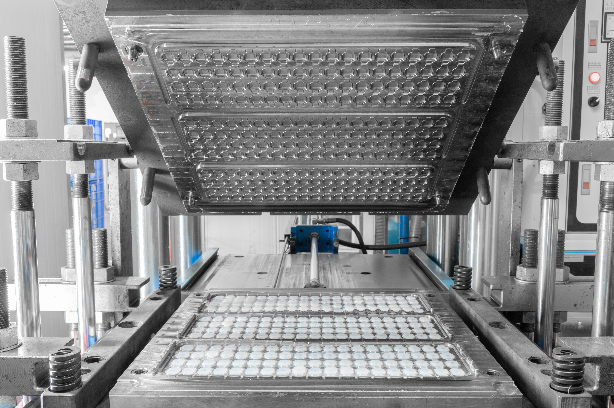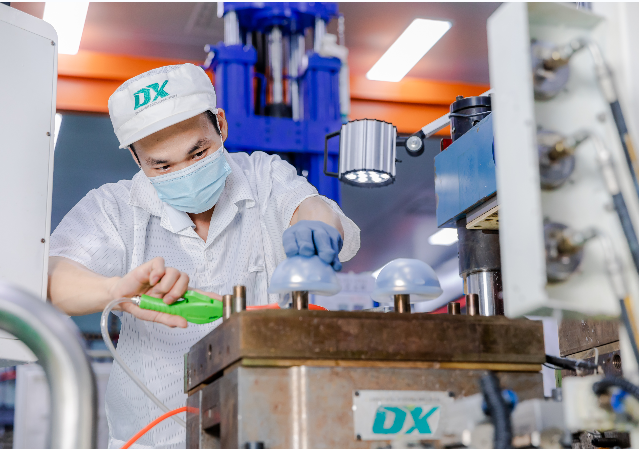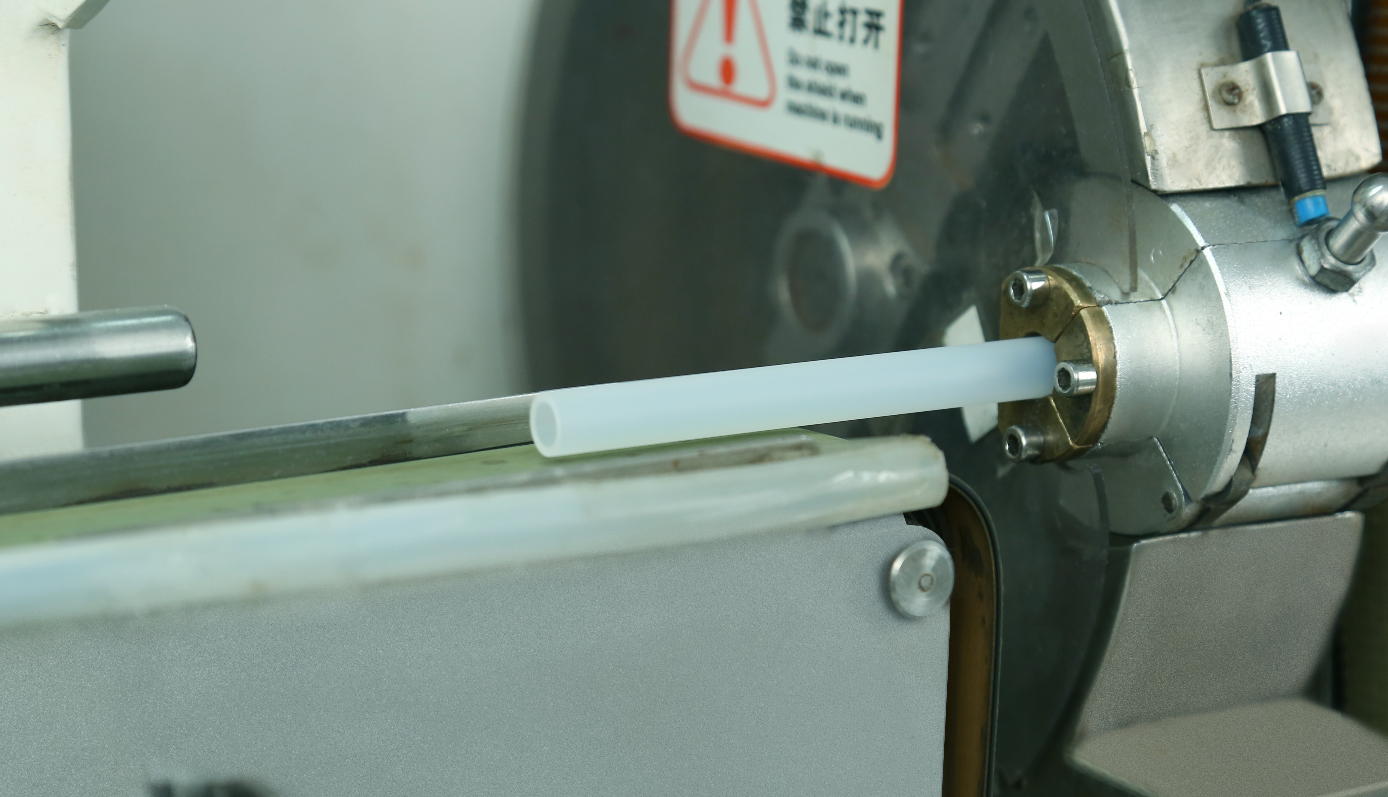
Did you know that when Neil Armstrong landed on the moon in 1969, he was wearing boots with soles of silicone rubber? I bet you didn’t. Wouldn’t you like to know which of the silicone molding processes manufacturers used to make these record-breaking boots?
You might already know that there are options when it comes to making rubber components. However, it is also important that you understand that one may work better than the other depending on various factors. Knowing this as a rubber manufacturing company will help you put out only the best quality products. There are three types of silicone molding processes. They are:
In the next few paragraphs, I will explain how each type works. I will also explain their applications, benefits, and “downsides”, among other things. Read on to find out!
On this page- Types of Silicone Molding Processes.

Compression molding involves the placement of unvulcanized silicone into the cavity of one or both cavities of the mold. Industries can vulcanize rubber through this method.
It is one of the oldest methods of molding in the industry. If you’re wondering if that deters it from being useful or relevant, the answer is no- that it is still very relevant today.
Manufacturers use compression molding to make articles ranging from flat objects to those with mild curves- and even some intricately designed objects as well! Boots are one of these articles.
Interesting… Right?
First, you add some of the unvulcanized silicone into a cavity. I advise that it is important you ensure that the material is specially weighted and preformed to fit the space. If you would desire to throw in a bit of color into the silicone, you could do that beforehand as well.
After these, compress the rubber between the top and the bottom plates, subjected to a fixed desired pressure. Then, you heat the plates next. The pressure and temperature cause the melting and the curing of the silicone. When the process ends, release the pressure and remove the mold with tools.
First is the low cost of tooling. It is a low-pressure mold, therefore it is quite cheap to work with, especially if you want to use it on a large scale. In addition, compression molding boasts a low lead time.
Compression molding is also available for a notable variety of sizes. These parts can vary from less than one inch to about thirty inches in diameter. You can also have a variety of thicknesses as well!
One of the downsides is that it generates only intermediate tolerance. Another is that you might have to remove substantial flash from some parts. Thus, there is a tendency for some degree of wastage to occur during use. Cycles between jobs are slow too, compared to, say, injection molding.
Compression molding does not always work well for complicated, complex configurations. They however work well for simpler designs. Also, when you use compression molding, you might have to consider using transfer or injection molding to round off your work.
From the name, injection molding involves the injection of material (in this case, silicone rubber) into a mold to assume a particular shape.

Some of the equipment you’ll need for the process are an injector, a nozzle, a mixer, a mold, and a clamp.
The process starts with the pumping of the liquid silicone from two containers “A” and “B” into a mixer at a ratio of 1:1. One of them contains the catalyst. Before mixing, you add colourant as well. The whole mixing process occurs in a metered fashion. From the static mixer, an injector pushes the silicone into a cavity where the heating of the mold takes place. A cold runner system prevents the silicone from prematurely curing before it enters the cavity.
When the liquid silicone enters the mold, clamping occurs to lock the cavity in place, and hold the mold. During the heating process, the temperature of the cavity peaks at about 180° to 200°C to facilitate the cross-linking process- in other words, curing. The process ends with the cooling of the product and its removal of the product from the mold.
There is little or no waste of resources. This is because the liquid silicone is directly injected. There are very few chances of having excess flash.
Also, there is no need to pre-form. The production process is therefore significantly faster, and less labor-intensive. This makes it possible to do much more, in little time.
In injection molding, the cycle time is shorter than that of compression molding. You can pull off high-detail works with injection molding as well, compared to compression molding, efficiently.
Tooling is much pricier than it is in compression molding. Given that each mold may require tools tailored for it, this might even cause longer lead times than in compression molding.
Some might cost about ten times more than similar products in compression molding. That can be quite a pain. There is also a limitation in size in injection molding. Big tools might be too expensive to pull off the process.

Extrusion molding is the last silicone molding process on this list- certainly not the least. Articles such as cords, and objects that have a fixed cross-sectional area, among others are products of extrusion molding.
The process of extrusion is quite interesting. It starts by preparing a heat-cured silicone (HCR)-formulated compound (with a catalyst) into a strip or slab to start the process. Then, you feed the silicon preform into a screw extruder, driving the compound through a die made of hardened steel. The extruder head holds the die.
After the silicone rubber goes through the die, the die gives the silicone rubber its shape. As the silicone profile comes out of the die, a heated cure oven constantly pulls it to cure it. Steam vulcanization, salt bath cure, infrared radiation cure, and hot air circulation are some types of ovens.
Unlike injection molding, the stream of delivery is relatively continuous.
Extrusion molding boasts a wide range of applications. Many articles are products of this process today. Some of them include fiber-optic sheathes; dairy, food and beverage seals; aerospace seals; gaskets; electronics, and some elements of automobiles.
It is noteworthy that extrusion modeling remarkably works best for pipe-themed products. In addition, extrusion molding is cost-effective. It also yields high production volumes, efficiently.
The major downsides of extrusion molding are the high initial cost set-up, the variation in product sizes, and the limitations that arise because you can only produce one cross-section at a time.
Knowing which molding process to stick with is dependent on the kind of job you want to do. Compression tooling, for example, is cheap and works for simple work. However, there is a tendency for wastage.
Injection molding, on the other hand, is perfect for detailing and can be quite efficient. It however comes at the cost of expensive tooling, among other things.
Furthermore, extrusion modeling is more tailored for pipe-themed products and those with uniform cross-sections. Therefore, before undertaking any job, you should consider the specifics before opting for a particular method. I hope you found this helpful!
DX provides you with all-around silicone product customization services for valued customers like you.